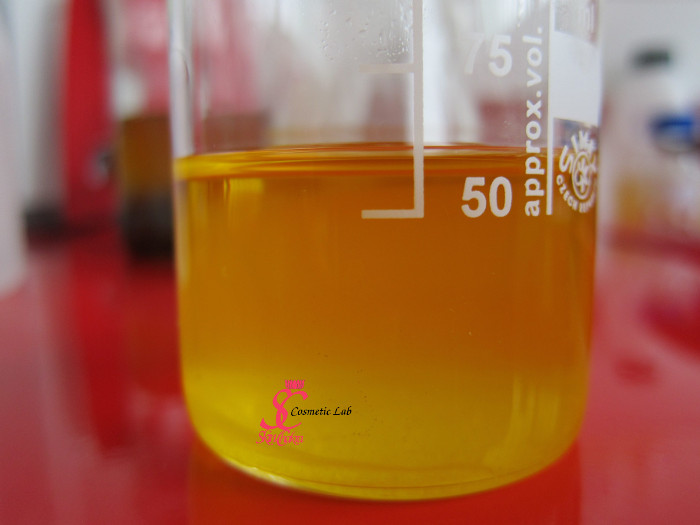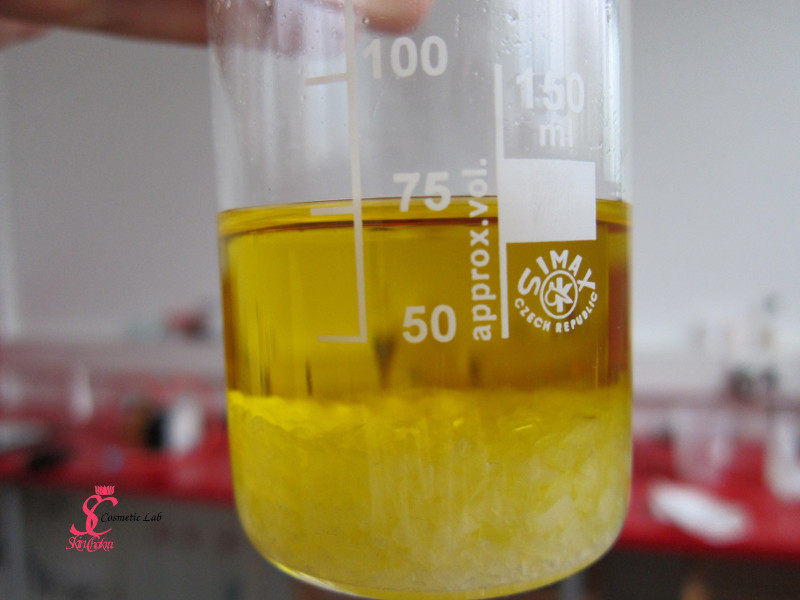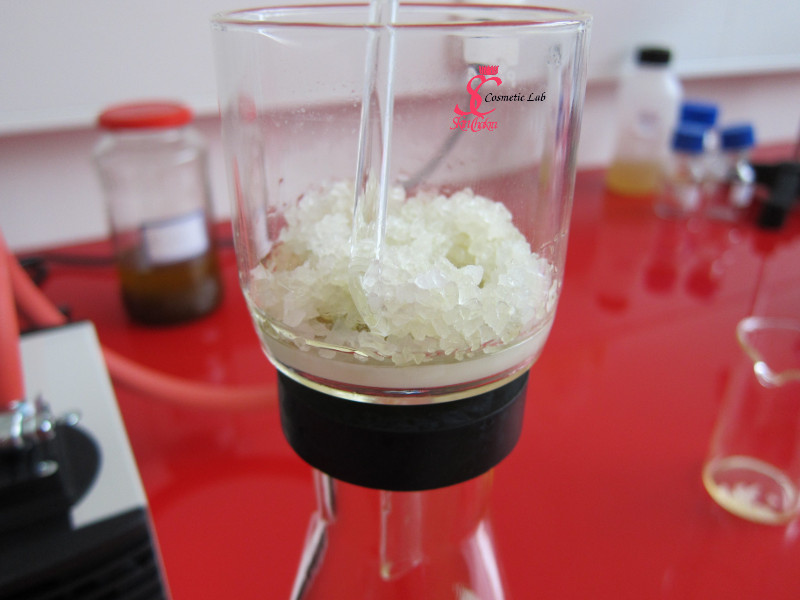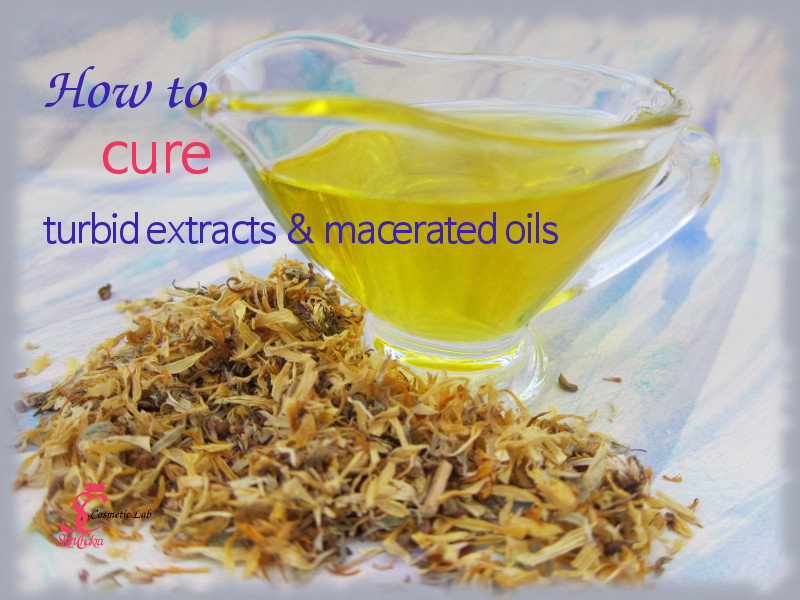If you're a herbalist, artisan soap maker or cosmetic formulator you probably make your own herbal infusions, macerated oils and extracts and I'm sure you have at least one cloudy oil under your belt. Cloudiness and turbidity could be caused by several factors: suspended particles for example can cause cloudiness and turbidity. Most of you probably apply cheese cloth or similar filters for filtration. It is very possible that some small particles escape the filter and cause cloudiness. In a previous post, I've suggested how you can filter your infusions and macerated oils with a glass filter.
Another reason might be temperature. By some oils with longer chain fatty acids or with high concentrations of waxes and unsaponifiables (this is the case with virgin and unfiltered oils) such as avocado oil, the oil becomes cloudy and even some ingredients sediment at lower temperatures. You've probably observed this cloudiness in winter.
The most significant cause of turbidity, at least in our case is water. If your plant parts or your bottles and vessels are not quite dry those small amounts of water (probably not visible or detectable by your eyes) cause turbidity and cloudiness. This is not just an optical and visual issue. Water in the system can promote microbial and fungal growth and this is certainly the last thing you want in your system. If you're going to apply the macerated oil immediately in a soap or in an emulsion, then you don't need to be worried about turbidity. You'll (hopefully) preserve the emulsion and the chances of bacterial growth in soap are next to nothing. However fungi, can grow in alkaline pH but if you let the soap cure/dry completely, then there would be no chances of contamination.
The problem may become significant if you're going to apply the oil as a stand-alone oil or in a blend of oils (facial oil, massage oil, shaving oil etc.), in aserum, in a balm or butter or even for edible applications.
Here you really should avoid and eliminate any chances of contamination.
During the last couple of years I have read repeatedly recommendations for removing turbidity from macerated oils and infusions. In most of these recommendations, they tell you to heat the oil till the water evaporates. Heating a blend of oil and water is certainly the worst thing you can do to get rid of turbidity. You will not only deteriorate and damage sensitive phyto-ingredients extracted into the oil, you'll promote oxidation of the oil (rancidity) and its hydrolysis. Think about al those precious ingredients extracted over weeks and months into your carrier oil. You'll not only destroy those active ingredients, you'll ruin your carrier oil as well.
So what?
Suppose you've done your best to avoid any moisture and despite all your efforts, your oil looks like this.

What should you do to get rid of the water?
You all know that salt has a great affinity for water. Adding coarse salt to the oil and letting it absorb the water is one of the easiest and cheapest ways to get rid of the water.
Try this out. There is nothing you can make wrong or make worse.
Add coarse salt to the oil (be sure that the salt is dry). This is the salt you use for cooking (Sodium Chloride). I've added about 20 gr salt for 100 gr oil but you can play with the dosage to find an optimum dosage depending on your ambient humidity, the amount of present water and the quality of the salt.

Stir the salt-oil blend in intervals. The more you stir, the more water would be absorbed. I leave the oil-salt blend overnight.
Filter the salt over a completely dry filter to a completely dry bottle or beaker. I use vacuum filtration over a sintered glass.
 After filtration, your cloudy oil would look like this:
After filtration, your cloudy oil would look like this:

Fill in a dry container. Close the lid. Protect the oil from sun, heat and moisture.
Don't hesitate to share your experience with me.
BeHappy and have fun






